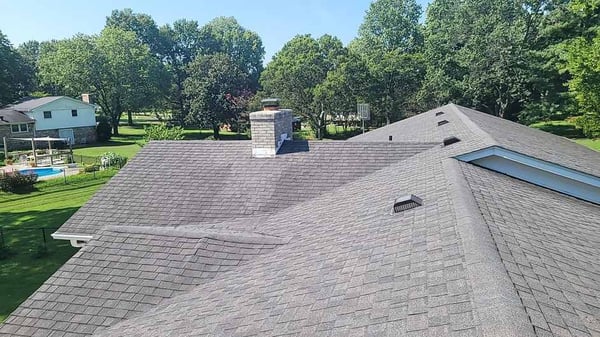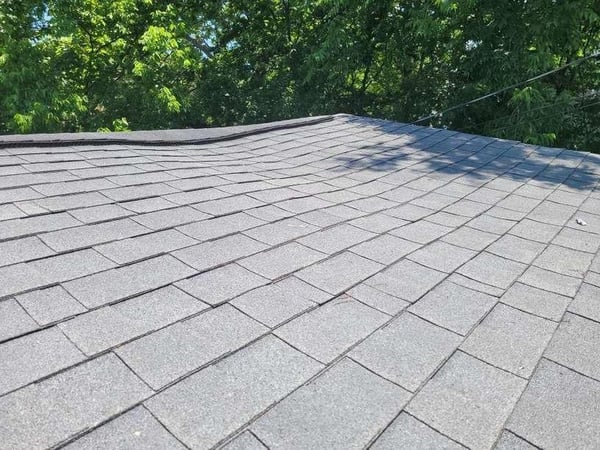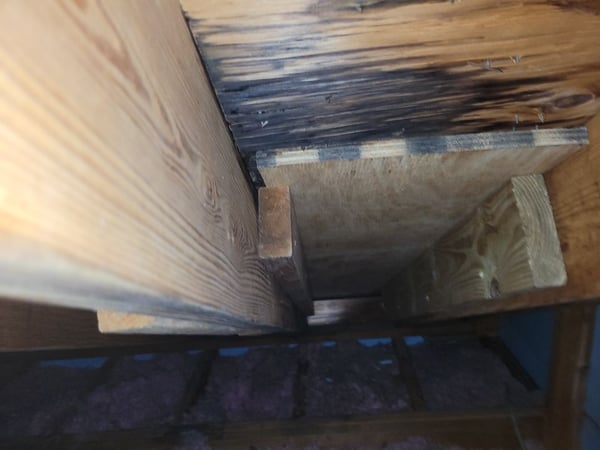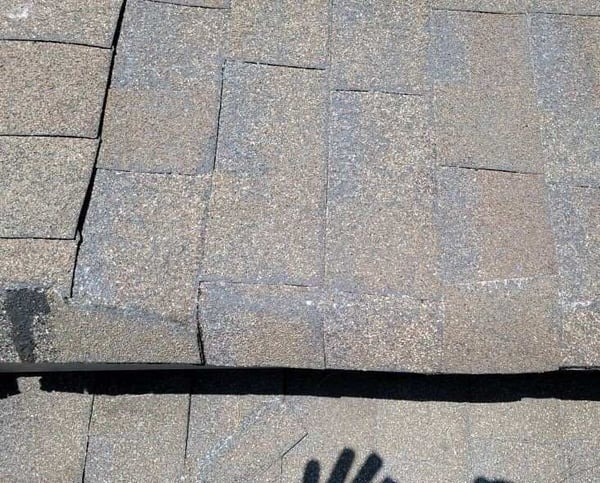Your attic’s ventilation system controls the airflow for your home. When the system can’t do its job, it comes with costly problems for both your home and the roof.
Unfortunately, poor attic ventilation is one of the most common problems I see when inspecting roofs. Even worse, most homeowners don’t know until there’s already thousands of dollars worth of damage.
I don’t want this to happen to you or anyone else. That’s why I’ll use my 30-plus years in the roofing industry to help you identify if your home has poor attic ventilation before it’s too late.
This article covers the following 6 signs of poor attic ventilation:
- Upstairs rooms are hot during the summer months
- Ice damming occurs during the winter months
- Roof sagging and decking discoloration
- Mold forming and metal rusting in the attic
- Termite or other animal infestation
- Cracked or curling asphalt shingles
1. Upstairs rooms are hot during the summer months
The first sign of poor attic ventilation is when your upstairs rooms are uncomfortably hot. Without proper attic ventilation, the hot air gets trapped with no fresh air being pulled in.
This heat radiates down into the living spaces below to the point where it won’t be cool enough to be in them until the sun goes down. You’ll also notice this sign because your AC unit is on more and longer trying to keep your home cool.
With your AC working harder, you’ll have higher energy bills. So, you definitely have an attic ventilation issue if your energy bills are exponentially higher in the summer months.
2. Ice damming occurs during the winter months
The next sign of poor attic ventilation is leaks caused by frequent ice dams forming during freezing weather. Ice damming occurs when water freezes down by the gutter line (eaves), creating an ice blockage (dam).
-1.jpg?width=600&height=599&name=IceDamming(2)-1.jpg)
In areas with frequent freezing temperatures, the warm air from the attic melts snow or ice on the roof just for it to refreeze at the gutter line in a continuous cycle. When it actually starts to warm up, water backs up and slowly drips into your home until it’s warm enough to completely thaw out.
Proper attic ventilation simply maintains a consistent roof temperature to avoid this continuous build-up cycle and helps prevent ice dams in general. While this sign shows up as a leak, icicles hanging around the gutter lines are also a sign of ice damming.
3. Roof sagging and decking discoloration
The next sign of poor attic ventilation is when condensation compromises your roof decking, leading to sagging and discoloration. Because roof decking is made of wood, it holds onto the excess moisture from condensation created by poor attic ventilation.

You’ll notice this when the decking becomes wavy, which gives your roof a wavy look. But over a short period of time, the decking also loses its ability to hold nails and load-bearing capacity.

This causes severe sagging once the weight of the roofing materials starts to bear down on the compromised decking. Another way to spot this sign is by seeing discoloration on the bottom of your roof decking.

This is a huge sign of a big problem, either with excess moisture from poor ventilation or an unidentified leak. If the problem is widespread enough, it’s actually a sign that you need a new roof.
4. Mold forming and metal rusting in the attic
The next sign of poor ventilation is when mold and mildew form in your attic. Just like the last sign, this sign (and most signs after) is caused by excess moisture from condensation.
The humidity levels of a poorly ventilated attic provide an ideal environment for mold and mildew to thrive. Check the attic insulation, the bottom of your roof decking, and other wood surfaces for signs of mold growth.
You may also notice a musty odor upstairs or when the AC is running if there’s mold growth in your attic. While excess moisture leads to mold, it also leads to corrosion of metal components, such as nails, fasteners, HVAC ducts, and more.
So, you most likely have a ventilation problem if you notice rusting on metal objects in your attic.
5. Termite or other animal infestation
Just like poor attic ventilation creates the perfect place for mold to thrive, it does the same for termites. A termite infestation in your attic is a clear sign of excess moisture in the air from condensation.
While termites are a serious issue, they’re not the only pests you have to worry about. Improper attic ventilation makes it easier for other pests (insects or rodents) to access your attic.
This is especially true if there are cracks or problems with your vents. If they have an access point, I guarantee they will try to take up residence in your attic or home.
6. Cracked or curling asphalt shingles
The last sign of poor attic ventilation is the actual damage it causes to your roof and shingles. Improper attic ventilation will always lead to a roof failing prematurely, which leads to roof leaks and a full replacement.

The trapped heat during the summer literally burns your roof to the point that the adhesives in the decking deteriorate. This weakens the wood and leads to your asphalt shingles becoming brittle and causing them to crack or curl.
You could also have shingles or full sections of shingles sliding off because ventilation issues lead to adhesive deterioration and rusted/damaged nails. Once you reach this point, all you can do is replace the shingles.
Which attic ventilation method is best?
Now you know the signs of poor attic ventilation. While there are six different signs, you’ll most likely have more than one if your attic isn’t properly ventilated.
Hopefully, you catch the signs early to avoid serious and costly damage. And obviously, you’ll need more ventilation to ensure it doesn’t happen again.
That’s why you should contact a roofing contractor as soon as you notice the signs that your attic is improperly ventilated. If they don’t find serious damage, you may only need to add more ventilation.
Depending on the attic space and your roof’s style, you may have to change the ventilation system altogether. Luckily, you get to choose the system you want and the accompanying roof vents.
But if you’re like most homeowners, you probably don’t know your options. That’s why I wrote another article breaking down the ventilation methods, their roof vents, and my professional recommendation.
Check out The Best Roof Ventilation Method (& Types of Roof Vents) to learn which attic ventilation system is right for your situation.



